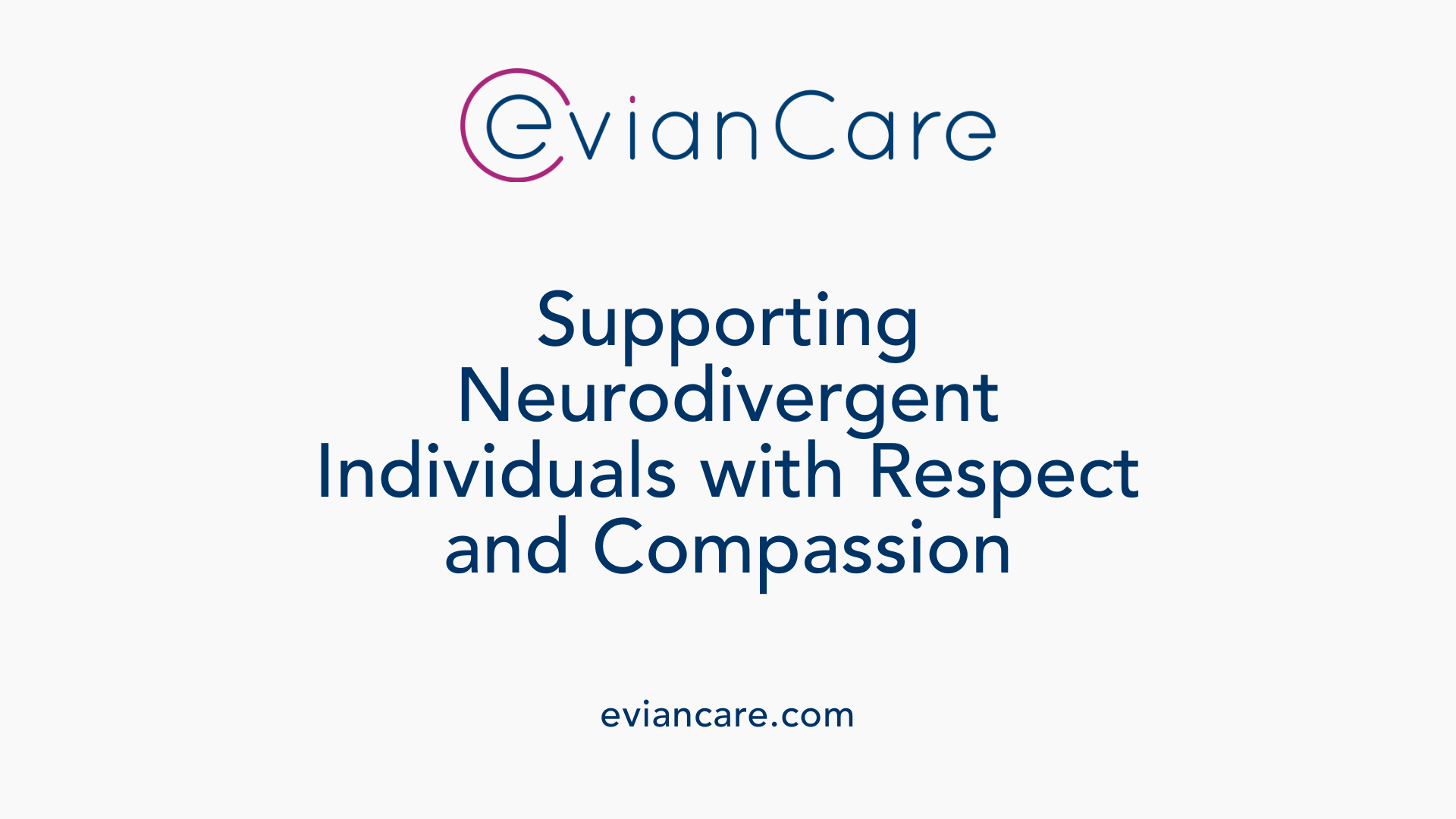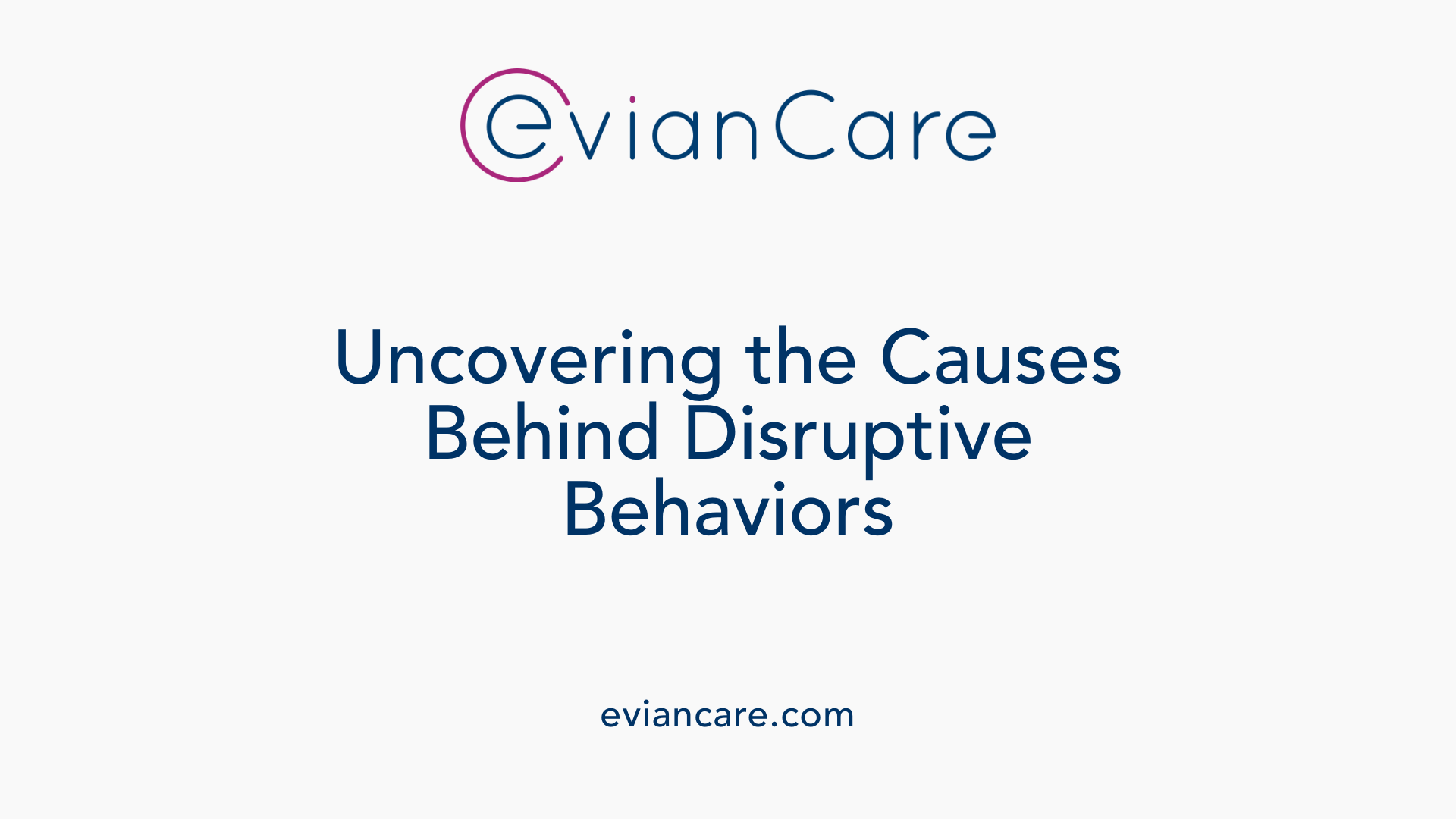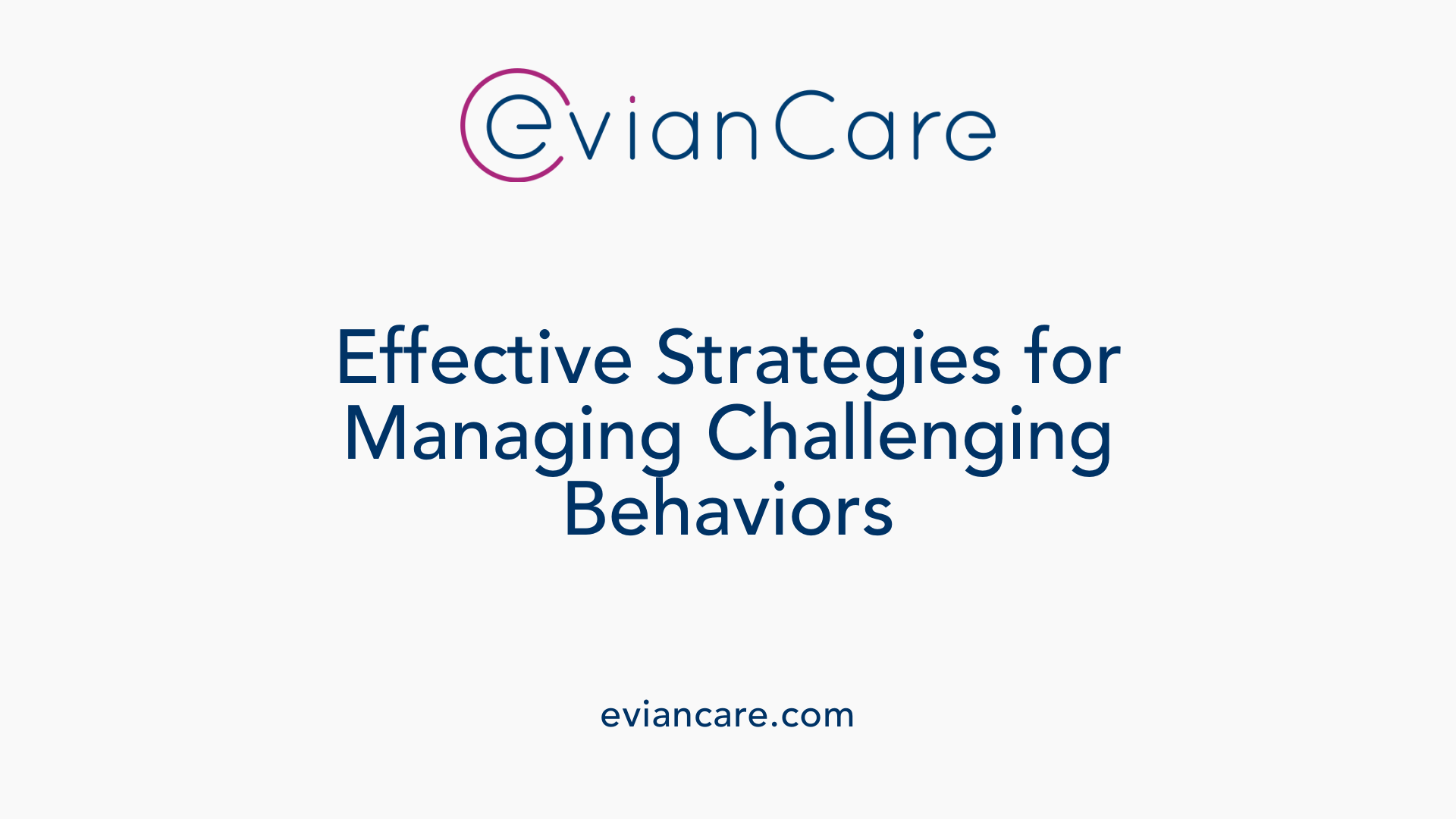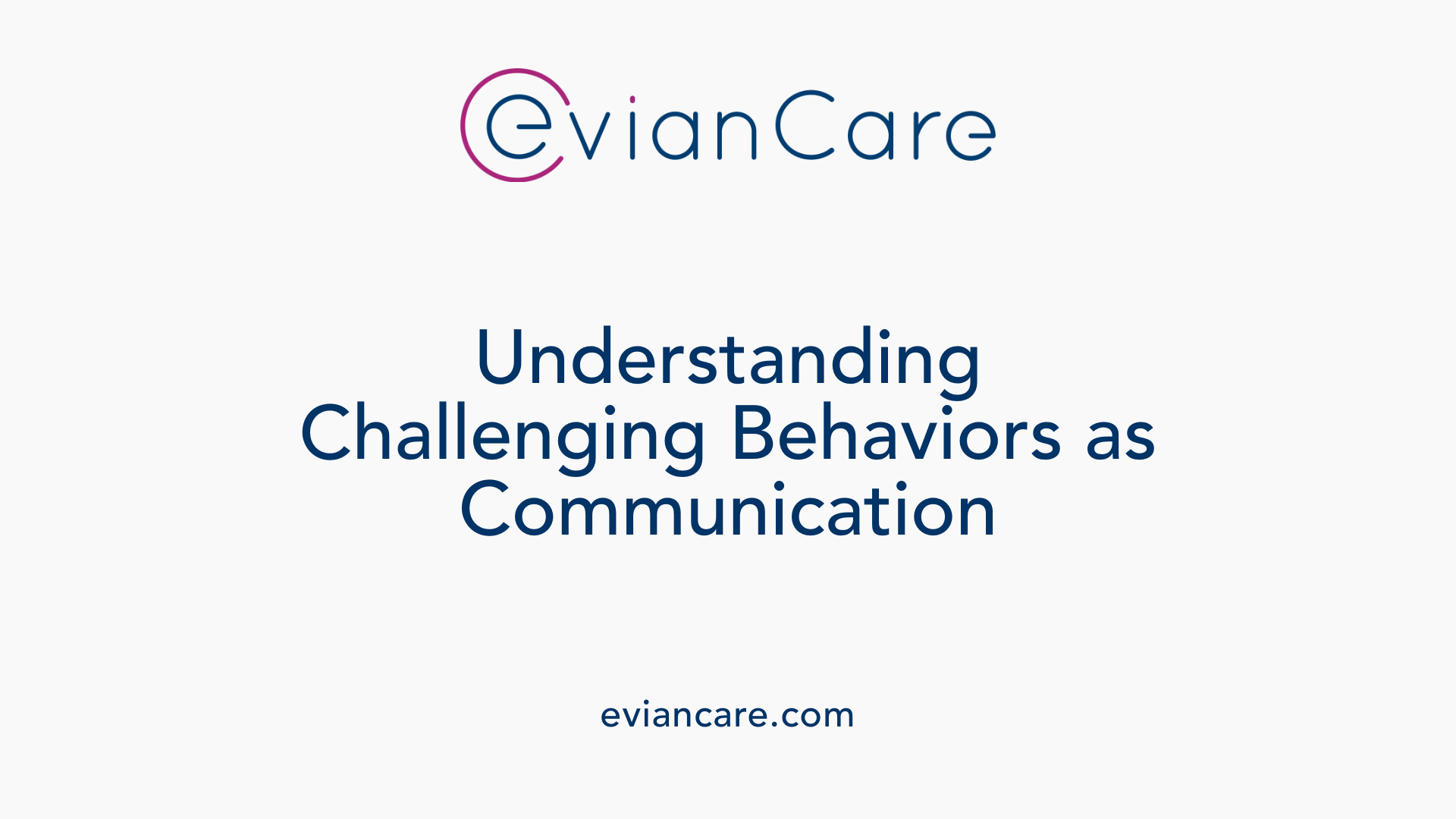
Understanding and Supporting Children with Complex Behaviors
Families supporting children with developmental disabilities or autism often face challenges related to aggressive and self-harming behaviors. These behaviors can be sources of stress and concern, but with tailored, ethical, and trauma-informed approaches, families can foster safer, more supportive environments. This article explores how Domain-Driven Design (DDD) principles, along with evidence-based practices and comprehensive support systems, empower families to understand, prevent, and manage these behaviors effectively.
The Role of Supportive, Person-Centered Behavioral Services

Why is it important to support neurodivergent individuals through non-harmful methods?
Supporting neurodivergent individuals through non-harmful approaches is crucial for fostering their well-being and respecting their inherent dignity. Ethical methods emphasize understanding each person’s unique strengths and needs, rather than trying to suppress behaviors through punishment or coercion. Neurodiversity-affirming practices promote autonomy, allowing individuals to express themselves authentically and develop skills in a safe environment.
Harmful treatments like restraint, seclusion, or punishment can cause trauma and may exacerbate mental health issues. In contrast, compassionate strategies focus on creating inclusive environments where individuals are supported through sensory accommodations, communication aids, and personalized interventions.
Research indicates that supportive, respectful approaches not only improve the quality of life for individuals but also enhance social inclusion and participation. Societies benefit when organizations recognize the valuable contributions of neurodivergent people, fostering a culture of acceptance and understanding. Such practices also align with international human rights standards, ultimately promoting healthier, more ethical communities.
Identifying and Understanding Behavior Triggers

How can families understand the causes and triggers of disruptive behaviors in children with developmental challenges?
Families play a vital role in recognizing the underlying causes of challenging behaviors in children with developmental delays or disabilities. A thorough behavioral and medical assessment forms the foundation for this understanding. Techniques such as functional behavioral analyses (FBA) help pinpoint specific antecedents that trigger disruptive behaviors, including sensory sensitivities, medical discomforts, or environmental changes.
Observing patterns in behavior over time allows families to identify common triggers like fatigue, pain, or anxiety. For example, a child might act out more when tired or overstimulated, indicating the need for adjustments in daily routines or sensory environments.
Understanding communication difficulties and internal cues is also essential. Many children with developmental challenges experience impairments in interoception—the sense of internal body states—which can lead to unrecognized discomfort or emotional distress that manifests as behavior. Recognizing these internal cues enables caregivers to respond proactively.
Social reinforcement and attention-seeking behaviors can unintentionally maintain disruptive actions. Children might escalate behaviors to gain attention or escape from stressful situations. Collaborative efforts involving behavioral therapists, psychologists, and medical providers help interpret these cues accurately.
Professionals assist families in developing targeted strategies to address core needs, manage triggers effectively, and prevent escalation. This holistic approach emphasizes an understanding of the child's unique sensory, emotional, and communication profiles, fostering a supportive environment that promotes well-being and reduces disruptive episodes.
What early strategies are effective in preventing aggressive and self-injurious behaviors?
Preventing aggressive and self-harmful behaviors begins with early, proactive interventions centered around individualized, evidence-based strategies. Application of applied behavior analysis (ABA) remains a cornerstone, with treatments tailored to the specific functions of behaviors.
Conducting functional behavioral assessments (FBA) early helps identify environmental factors—like specific triggers or reinforcing consequences—that sustain challenging behaviors. Once identified, interventions such as functional communication training (FCT) provide alternative means for children to express needs or frustrations.
Noncontingent reinforcement (NCR), which involves providing preferred items or attention independent of problematic behavior, can reduce the motivation to engage in harmful actions.
Equipping families with parenting skills through structured coaching programs empowers them to modify routines, implement consistent behavioral strategies, and create supportive environments. These programs often include techniques for managing transitions, reducing environmental triggers, and reinforcing positive behaviors.
Creating predictable, sensory-friendly classroom and home settings with clear routines, visual supports, and accessible materials also supports behavior prevention. Pediatric teams and early intervention specialists collaborate closely to ensure timely, tailored responses that hinder escalation and promote positive developmental pathways.
By combining early assessment, targeted behavioral interventions, and family education, these strategies aim to reduce the frequency and severity of aggressive and self-injurious behaviors, ultimately improving quality of life for children and their families.
Behavior Management Strategies and Techniques

What effective strategies can families adopt to manage aggressive and self-harming behaviors?
Managing aggressive and self-injurious behaviors in children with developmental disabilities or autism requires a thoughtful, personalized approach. Families can start by identifying specific triggers that lead to challenging behaviors through careful observation and documentation.
Using visual supports such as schedules, social stories, and picture cues helps children understand routines and expectations, reducing anxiety and confusion. Consistent routines and structured environments create predictability, which can lessen behavioral outbursts.
Positive reinforcement is a vital technique: praising desired behaviors and offering meaningful choices encourage children to engage in appropriate actions. For instance, rewarding cooperative behavior or successful communication reinforces those positive patterns.
Environmental modifications play an important role, especially sensory accommodations. Adjusting lighting, noise levels, or providing sensory tools like weighted blankets or fidget objects can help children manage sensory overload and avoid escalation.
Behavioral interventions are often supported by evidence-based methods such as Applied Behavior Analysis (ABA), discrete trial training, and pivotal response training. These focus on teaching new skills and reducing problematic behaviors through reinforcement and skill development.
When responding to behaviors, caregivers are encouraged to remain calm, patient, and consistent. Modeling positive social responses prevents further agitation. Engaging with professionals for tailored strategies ensures the interventions meet each child's unique needs.
How can caregivers respond effectively during episodes of aggression or self-harm?
During episodes of aggression or self-harm, the primary goal is safety and de-escalation. Caregivers should respond in a calm, non-threatening manner to avoid reinforcing the behavior or escalating the situation.
If possible, moving the individual to a safe space away from objects or environments that could cause injury helps prevent harm. Using trauma-informed techniques like the S.C.A.R.E.D. approach—focusing on Safety, Calmness, Routine, Empathy, and De-escalation—guides caregivers in effective responses.
Verbal communication should be gentle and reassuring. Phrases like "I’m here for you" or "Let’s take a deep breath" can help soothe distress. Physical guidance, when necessary and done gently, can assist in redirecting behaviors.
Following the episode, providing positive reinforcement for calm behavior and teaching alternative ways to express feelings encourages future cooperation. Preparing a response plan beforehand, recognizing signs of escalation, and practicing consistent responses are key to supporting the child.
Collaborating with mental health and behavioral specialists ensures that crisis strategies are ethically sound, tailored, and effective. Ultimately, a calm and supportive approach fosters trust and helps reduce the frequency and intensity of problematic behaviors over time.
The Impact of Medical and Sensory Factors

What role do medical and sensory issues play in disruptive behaviors?
Medical conditions such as sleep disturbances, gastrointestinal problems, and untreated pain are common influences on disruptive behaviors in children with developmental disabilities. When a child experiences discomfort or pain that they cannot communicate effectively, it often manifests as aggression, self-harm, or other challenging behaviors. For example, a child with undiagnosed reflux may become irritable and resistant to comfort or routines.
In addition, sensory processing challenges—frequently seen in autism spectrum disorder (ASD) and other neurodevelopmental conditions—can cause children to overreact or become overwhelmed by sensory stimuli like loud noises, bright lights, or certain textures. This heightened sensory sensitivity can lead to outbursts or self-injurious actions as an attempt to cope with or escape the overload.
To systematically identify underlying medical issues, clinicians and caregivers often use tools like the ‘H-U-R-T-S’ mnemonic. This checklist covers Head issues, Urinary or renal problems, Reflux, Thyroid disorders, and Seizures, providing a structured approach to medical assessment.
Addressing physical discomfort and sensory processing differences is vital because they can directly trigger problematic behaviors. Treatment may involve medical interventions, sensory integration therapy, or environmental modifications to create calmer settings. These strategies help reduce the frequency and severity of behavioral episodes, ultimately improving the child's well-being and their ability to participate in daily activities.
Why is it important to adopt trauma-informed and ethical practices in behavior support?
Trauma-informed and ethical approaches are fundamental in supporting individuals with developmental disabilities because they focus on safety, dignity, and understanding. These practices recognize that challenging behaviors often stem from past trauma, unmet needs, or overwhelming sensory experiences.
By prioritizing empathy and respect, trauma-informed care helps in building trust with the individual, which is crucial for effective intervention. It involves actively avoiding practices that may re-traumatize or cause harm, such as harsh punishments or manipulation. Instead, caregivers use approaches that validate feelings, promote safety, and foster resilience.
Implementing ethical standards involves ongoing reflection, collaboration with the individual and their family, and making decisions guided by what is genuinely in the person's best interest. This ensures that interventions support emotional healing, skill development, and positive behavior changes.
Long-term, trauma-informed and ethical practices lead to more meaningful relationships, better engagement, and improved quality of life for individuals with disabilities. They help avoid the pitfalls of coercive or punitive methods, emphasizing instead the importance of understanding the person’s experiences and needs.
Additional insights
Research underscores the significance of early medical assessment, as about 75% of individuals with developmental disabilities experiencing problem behaviors have undiagnosed or untreated health issues. Utilizing tools like the ‘H-U-R-T-S’ mnemonic can lead to timely diagnosis and treatment, reducing behavioral issues.
Sensory challenges are also highly prevalent, especially in children with autism, and may include over-sensitivity to sounds, lights, or textures. Addressing these through sensory processing interventions can markedly reduce distress.
By integrating medical, sensory, and trauma-informed strategies, support providers can deliver holistic care that not only diminishes disruptive behaviors but also enhances overall development and well-being.
| Aspect | Description | Example/Details |
|---|---|---|
| Medical Conditions | Sleep issues, gastrointestinal problems, pain | Can trigger irritability and aggression |
| Sensory Processing | Overreaction to sensory stimuli | Bright lights causing meltdowns |
| Assessment Tools | ‘H-U-R-T-S’ mnemonic | Head, Urinary, Reflux, Thyroid, Seizures |
| Physical Discomfort & Pain | Underlying health issues as behavior triggers | Untreated dental pain leading to withdrawal |
Understanding and addressing medical and sensory contributors are essential steps toward supporting individuals with developmental disabilities in leading more comfortable and behaviorally stable lives.
Self-Harming and Aggressive Behaviors as Communication and Response to Trauma

How do challenging behaviors serve as communication for children with disabilities?
Children with disabilities often face significant challenges in expressing their thoughts and feelings verbally. As a result, they may resort to challenging behaviors like aggression and self-injury as alternative ways to communicate their needs, frustrations, or discomforts. These behaviors act as messages, signaling that something is distressing or unmet. When a child hits, bites, or causes self-harm, they might be trying to express pain, fear, sensory overload, or a desire for attention.
Understanding these actions as communications rather than mere defiance shifts the perspective for caregivers and professionals. It encourages a focus on discovering the root causes—such as environmental stressors, medical issues, or emotional concerns—rather than simply reacting to the behavior. Strategies like functional communication training can help children learn effective ways to communicate their needs and feelings, such as using gestures, pictures, or assistive technology, reducing the reliance on harmful behaviors.
By recognizing the context and purpose behind these behaviors, caregivers can develop tailored interventions that promote safer, more effective communication, ultimately improving the child's quality of life.
What role does trauma play in the development of aggressive or self-harming behaviors?
Trauma significantly impacts the emotional and behavioral development of children with disabilities. Past experiences such as neglect, physical or emotional abuse, bullying, or exposure to chaotic environments can leave lasting effects, leading to heightened anxiety, fear, or feelings of helplessness.
In response to unresolved trauma, children might develop aggressive or self-injurious behaviors as reactive coping mechanisms. These actions can temporarily reduce emotional distress or create a sense of control amid overwhelming circumstances. For example, a child who has experienced neglect might hit or hurt themselves to seek comfort or escape from feelings of abandonment.
Trauma-informed care approaches emphasize understanding these behaviors as responses to underlying emotional pain. Creating safe, predictable environments, fostering trust, and providing therapeutic support help address the emotional wounds that trigger such behaviors.
Interventions may include counseling, routine stabilization, and teaching emotional regulation skills, all aimed at healing trauma and reducing reliance on harmful coping strategies. Recognizing the link between trauma and challenging behaviors allows caregivers to adopt compassionate, effective strategies that support the child's healing and resilience.
Supporting a Path Forward
Empowering families through education, ethical support, and evidence-based strategies can transform challenging behaviors into opportunities for growth. By understanding the causes and implementing trauma-informed, non-harmful interventions, families can foster a supportive environment that promotes safety, communication, and independence. Collaboration with professionals, ongoing training, and community resources are vital in creating sustainable, positive change for children with developmental disabilities or autism and their families. Supporting neurodiversity and emphasizing dignity and respect are fundamental to building compassionate support systems that honor each child's unique journey.
References
- The Transformative Power of Behavioral Support Services for NJ ...
- Self Harm or Aggressive Behavior | Therapy Neurodiversity Collective
- What To Do If Your Child Is Self-Harming | Support Guide
- Risk Factors for Self-Injury, Aggression, and Stereotyped Behavior ...
- Demonstration of parent training to address early self-injury in young ...
- [PDF] Division of Developmental Disabilities Behavior Supports Manual
- [PDF] THE DDD RESOURCE TEAM'S BEHAVIOR ANALYSIS UNIT | NJ.gov
- Angry Kids: Dealing With Explosive Behavior - Child Mind Institute
- Self-injurious behaviour - a guide for all audiences












